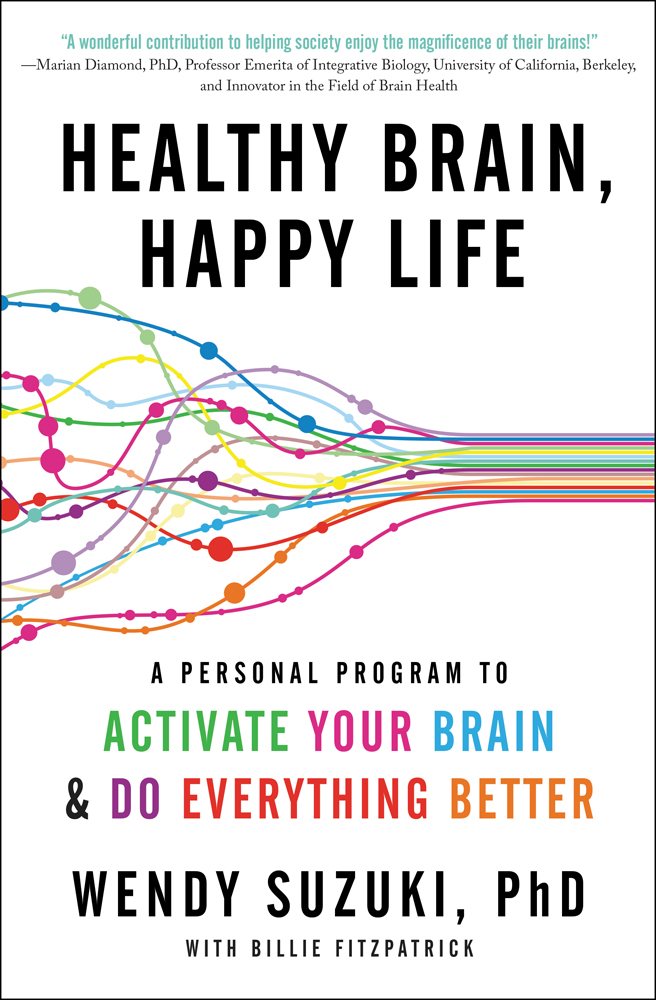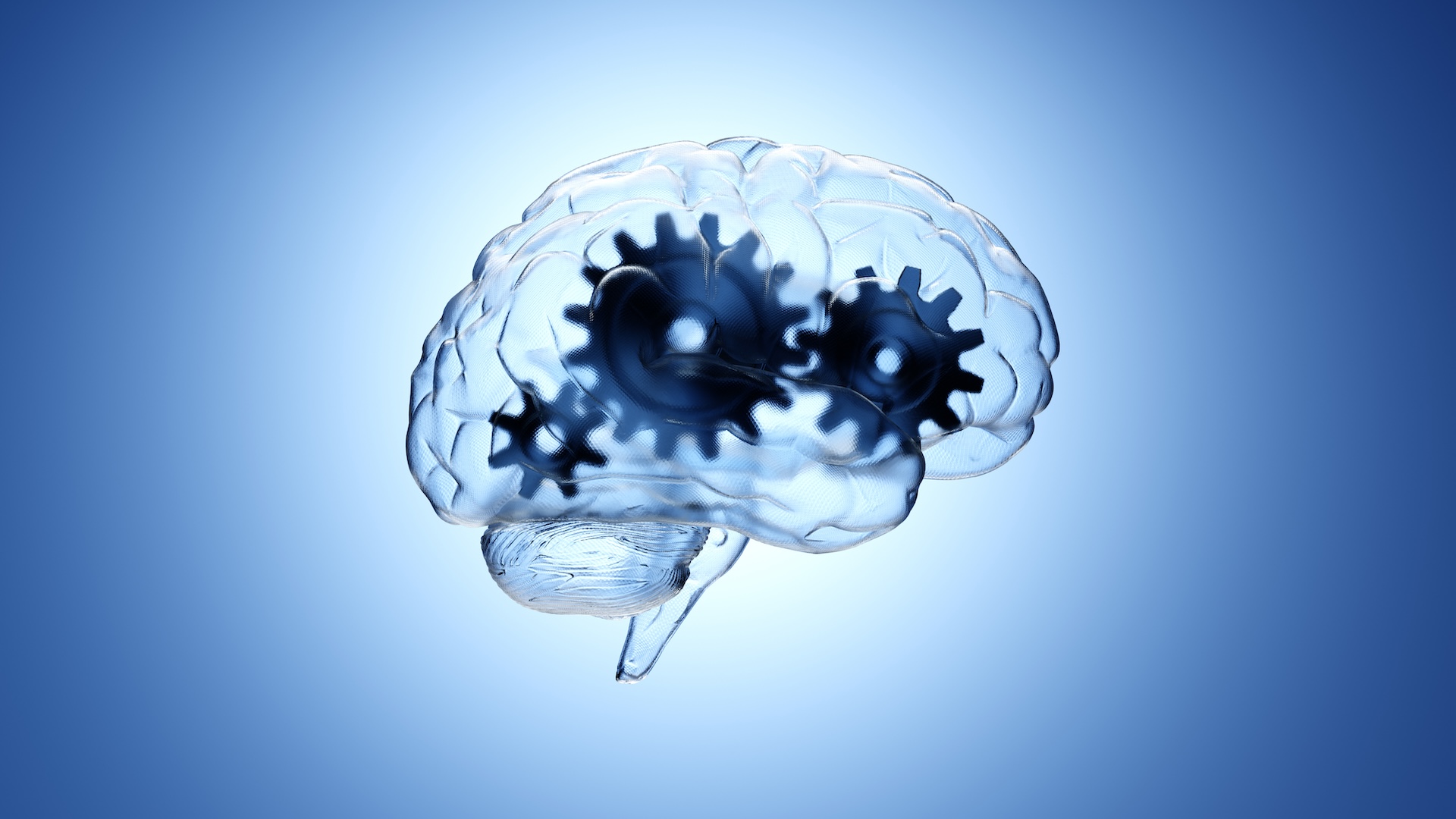
'Healthy Brain, Happy Life' (US, 2015): Book Excerpt

Wendy Suzuki is a professor of Neural Science and Psychology at New York University (NYU)'s Center for Neural Science. She is a regular presenter at the World Science Festival and TEDx, and is frequently interviewed on television and in print for her expertise regarding the effects of exercise on brain function. Her first book, "Healthy Brain, Happy Life" (Dey Street Books, 2015), is now available. Suzuki contributed this article to Live Science's Expert Voices: Op-Ed & Insights.
The following is an excerpt from "Healthy Brain, Happy Life" (Dey Street Books, 2015), Reprinted with permission from Dey Street Books, Copyright © 2015 by Wendy Suzuki. For more about Suzuki's research, read her essay, "'Mental Time Travel' and the Effects of Exercise on the Brain."
CHAPTER 4
Discovering a Workout With a Message
During one of my regular evening sessions at the gym when I had already attained most of my weight-loss goal, the list of possible classes caught my eye. I had a choice that evening between a cardio boot camp class and another class that I had never heard of called intenSati — with no explanation for what intenSati meant. I was not feeling all that energetic, and the cardio boot camp class just sounded too hard. So that's how I ended up walking into my first intenSati class. Little did I know that this class was not only harder than cardio boot camp but would be the catalyst for upping the level of my workouts, improving my mood and my outlook on life, and eventually even shifting my neuroscience research.
At the beginning of that class, the instructor, Patricia Moreno, the woman who created this class, told us that the term intenSati, comes from the combination of two words. Inten comes from the word intention. Sati is a Pali word (a language from India) that means "awareness or mindfulness." She told us that the goal of the practice of intenSati is to bring an awareness/mindfulness to our own intentions. She explained that we were going to be doing different movements from kickboxing, dance, yoga and the martial arts, all the time shouting positive affirmations along with each move. I was not so sure about the shouting part, but Moreno was a completely riveting instructor so I stayed to experience this intriguing new class for myself.
That first class felt like an explosion of movements. Moreno started off showing us a simple yet energetic movement, such as alternating left and right punches. Once we got the movement down, she would then give us the affirmations that we would shout out along with that move. For example, with the punches, we said out loud, "I am strong now!" This move was called Strong. Each move had a specific name. We would do the first movement for a while, and then she would add a movement/affirmation combo, until we had strung fifteen or twenty different movements and affirmations together. Each particular set of affirmation/movement combos was written as a series with a specific message. The message was one of empowerment: The power of your mind, the power of positive action, the power of your body, and the power of positive thoughts over negative ones. It was a workout with a message.
Moreno told us that what we declare with our voices is powerful. And that when we start incorporating these powerful affirmations into our thoughts — that is, when we start to think and believe them — they become even more powerful still.
When we pushed our arms up in the air in an alternating fashion with our palms open and our fingers spread wide, we shouted, "Yes! Yes! Yes! Yes!"
When we punched up and down, we shouted, "I believe I will succeed!"
When we threw uppercut punches with alternating hands, we shouted, "I am inspired now!"
It was a workout for my body and my brain. Asking your brain to remember arm and foot work combinations, as well as affirmations to shout out, is asking your brain to work! There are also the words of the affirmations that the instructor is telling you, which you are also trying to remember — even before she says them. So your memory is also put to the test in an intenSati class.
Of course, I didn't appreciate all of the brain–body connections being made by intenSati after just one class. I was trying hard just to keep up and remember the movements — never mind remembering the affirmations at the same time! And it was hard. Shouting those affirmations while doing all the moves made you more out of breath than just doing the movements alone and upped the level of the workout considerably. I was also definitely a little shy at first about shouting out the affirmations. But there were plenty of regulars in class that night shouting with abandon, and once I managed to get the movements down, I got caught up in the fun and started shouting along with everyone else.
Have you heard people say that people won't remember what you say, only how you made them feel? I can't remember the exact affirmations that I said that night in class, but I do remember how I felt: totally empowered, energized, and enlivened — in a brand-new way. And I could not wait to come back for the next class.
Harnessing the Power of the Brain – Body Connection
What was so different about this workout? Remember, I was already in good if not great shape by the time I wandered into this class. I was really starting to feel great about both my overall cardiovascular and muscular strength as well as the outside package after I lost the weight. I loved going to the gym and had already made it a regular part of my life. I was already feeling great and energized and was sure that my workouts helped me through those stress-filled years as I was applying for tenure, but intenSati brought something brand new into my life. I would not have been able to articulate it at first, but I now realize that this workout was so special because it brought the power of the brain–body connection to life for me more powerfully than I had ever felt it before.
The first thing I noticed was that I pushed myself during those workouts more than I had in any other class I was taking. Why? It was the power of those positive affirmations and actually speaking them out loud that seemed to flip a switch in me. It was the difference between doing a class and getting a good, sweat-inducing workout and really feeling strong because I was declaring I was strong or empowered or confident or a million other positive affirmations we used in that class. I was pushing myself even harder be- cause I started to really believe I was strong. And I started to really feel that strength, embodying it not just during class but also long after class ended, when I went back into the real world.
But this is where the power of the brain–body connection comes into play. This connection refers to the idea that the body has a powerful influence on our brain functions and conversely that the brain has a powerful influence over how our bodies feel and work and heal. While I had been going to the gym for some time, and I definitely felt much more fit and energized and happy, I really started to appreciate the true power of the brain–body connection only with this new class. And the first thing I noticed was how strongly this workout (body) boosted my mood (brain).
From a neurobiological perspective, we know the most about the brain basis of mood from situations in which mood is altered — namely from the study of depression, one of the most common psychiatric conditions in first-world countries like the United States.
From studies of abnormal mood states, we know mood is determined by a widespread and interconnected group of brain structures together with interconnected levels of a set of well-studied neurotransmitters and growth factors. We talked about the role of the hippocampus in memory, and recent studies have shown that its normal functioning is also involved in mood. In addition, the amygdala, important for processing and responding to emotional stimuli, and the prefrontal cortex are both implicated in regulating our mood states. Furthermore, two other systems, which I describe in greater detail in later chapters — the autonomic nervous system including the hypothalamus (Chapter 7) and the reward circuit (Chapter 8) — are involved in regulating our mood. We also know that the appropriate levels of particular neurotransmitters are important for regulating mood.
An influential theory of depression is that it is caused by a depletion of a category of neurotransmitters called monoamines. These include serotonin, whose low levels most of us associate with depression, but lowered levels of norepinephrine, another neurotransmitter, as well as dopamine are found in the brains of patients with depression. Therefore, the studies suggest that if you boost the levels of these neurotransmitters, you can boost mood.
Well, little did I know but I was getting a triple whammy of mood-boosting power with the intenSati workout. First, many studies have shown that not only does aerobic exercise improve measures of mood in subjects both with depression and without but that exercise boosts levels of the three key monoamines we know play a key role in mood: serotonin, noradrenaline and dopamine.
Besides these classic mood-associated neurotransmitters, exercise also increases levels of endorphins in the brain. Endorphin literally means "endogenous (made in the body) morphine." It is a kind of morphine that has the ability to dull pain and provide feelings of euphoria. Endorphins are secreted by the brain's pituitary gland into the blood, where they can affect cells throughout the brain that have specific receptors for them. Because endorphins are secreted into the bloodstream, they are categorized as a hormone; neurotransmitters, on the other hand, are released at synapses from the axon of the cells that synthesize them.
While most of us assume that endorphins are responsible for all or most of the high associated with some forms of exercise, the story is not as clear as all that. In fact, for many years there was a huge controversy in the neuroscience community (invisible to the popular press) over whether endorphins had anything to do at all with the so-called runner's high. This was because, while there was good evidence that the level of endorphins increased in the peripheral bloodstream (that is, the bloodstream that courses through the body), it was not clear if exercise changed the level of endorphins in the brain, which is where they had to be working to produce the runner's high. Only recently has a group in Germany provided evidence that running does activate the endorphin system in human brains and that the more profound the reported runner's high, the stronger the activation. So neuroscience shows that a range of different neurotransmitters associated with mood and/or euphoria are increased with exercise and are likely causing at least part of the party mood caused by exercise.
The second mood-boosting whammy from intenSati comes from the spoken affirmations that are such a prominent part of this workout. A relatively large body of psychology experiments has shown that self-affirmations like the ones we were shouting to the rooftops in class help buffer people from a whole variety of different stressors, including peer-based classroom stress, rumination associated with negative feedback, and stress associated with social evaluation. One recent study reported that positive self-affirmations significantly improved mood in people with high self-esteem. We don't know the brain and neurochemical changes associated with self-affirmations, but the behavioral evidence is quite clear that positive affirmations boost mood.

The third mood-boosting whammy of intenSati comes from the fact that during class, the physical moves that we perform are very strong and powerful; we are essentially in one power pose after another. The TED talk sensation Amy Cuddy, a social psychologist from Harvard, did a study in which she had some people pose in powerful positions with their arms behind their head and their feet up on a desk (the Obama pose) or with both hands leaning forward on a table in a pose of authority for just one minute, and other people pose in non-powerful positions, like sitting with the legs and arms crossed. The study showed that relative to the non-powerful posers, the power posers had increased levels of testosterone and decreased levels of the stress hormone cortisol in the bloodstream (after just one minute) as well as increased feelings of power and higher levels of risk tolerance. Indeed, recent studies in rodents confirm that exercise can increase testosterone levels in the blood, but other studies show that higher-intensity aerobic exercise increases circulating cortisol levels. These findings add to our knowledge of the powerful cocktail of brain and blood factors that can shift our mood after exercise.
This was also when I first started to see that while exercise is great for our bodies, when we make exercise both aerobic and mental — meaning you are fully engaged in the movement and/or feel passionately about it — we trigger another very powerful level of the mind-body connection. I call this intentional exercise. The key point is this: While the form of exercise I found in my gym was a fantastic example of intentional exercise, it is not the only one. I realized that you could make any workout intentional simply by bringing your own positive intentions, affirmations or mantras to the class and focusing on those as you work out. Bring a positive affirmation like "I am sexy" or "I am graceful" to your next Zumba class. Choose a mantra like "I am strong" or "I am powerful" for a cardio/weight-training class or your next run. Adding your own personal affirmation or mantra to your favorite workout will do the same thing as what I experienced in the intenSati class. It will create the same positive feedback loop of affirmations and exercise, leading to good mood, leading to higher motivation, leading to higher levels of exercise, and leading to even better mood. You might need to play around with the kind of exercise you choose to optimize the effect. It has to be one you enjoy and that will allow you to get into the affirmations that really motivate you to do more. Try it out and see what works!
Follow all of the Expert Voices issues and debates — and become part of the discussion — on Facebook, Twitter and Google+. The views expressed are those of the author and do not necessarily reflect the views of the publisher. This version of the article was originally published on Live Science.
Sign up for the Live Science daily newsletter now
Get the world’s most fascinating discoveries delivered straight to your inbox.










